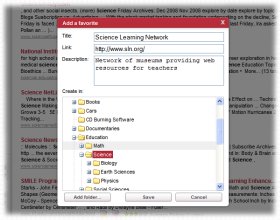|
Education
Web
Viewing 1-1 of 1 total results
8. Draw conclusions and inferences from texts. 9. Recognize first-person “I” point of view. 10. Compare and contrast story plots, characters, settings, and themes. 11. Participate in creative responses to texts (e.g., dramatizations, oral presentations). 12. Read regularly in mate...
1
0
8. Draw conclusions and inferences from texts. 9. Recognize first-person “I” point of view. 10. Compare and contrast story plots, characters, settings, and themes. 11. Participate in creative responses to texts (e.g., dramatizations, oral presentations). 12. Read regularly in materials appropriate for their independent reading level. 13. Read and comprehend both fiction and nonfiction that is appropriately designed for grade level. 14. Use information and reasoning to examine bases of hypotheses and
12
0
http://www.nj.gov/education/cccs/2004/s3_lal.pdf#page=12
www.nj.gov/education/cccs/2004/s3_lal.pdf#page=12
in silent <span class="highlight">independent</span> reading <span class="highlight">for</span> specific purposes. 3.1.1 H. Inquiry and Research 1. Ask and explore questions related to a topic <span class="highlight">of</span> interest. 2. Draw conclusions from <span class="highlight">information</span> and data gathered. 3. Be exposed to and read a variety <span class="highlight">of</span> fiction and nonfiction, and produce evidence <span class="highlight">of</span> reading. Building upon knowledge and skills gained in preceding grades, by the end <span class="highlight">of</span> Grade 2, students will: 3.1.2 A. Concepts About Print/Text 1. Use titles, tables <span class="highlight">of</span> contents, and chapter headings to locate <span class="highlight">information</span>. 2
14
0
http://www.nj.gov/education/cccs/2004/s3_lal.pdf#page=14
www.nj.gov/education/cccs/2004/s3_lal.pdf#page=14
8. Draw conclusions and inferences from texts. 9. Recognize first-person “I” point <span class="highlight">of</span> view. 10. Compare and contrast story plots, characters, settings, and themes. 11. Participate in creative responses to texts (e.g., dramatizations, oral presentations). 12. Read regularly in materials appropriate <span class="highlight">for</span> their <span class="highlight">independent</span> reading level. 13. Read and comprehend both fiction and nonfiction that is appropriately designed <span class="highlight">for</span> grade level. 14. Use <span class="highlight">information</span> and reasoning to examine bases <span class="highlight">of</span> hypotheses and
18
0
http://www.nj.gov/education/cccs/2004/s3_lal.pdf#page=18
www.nj.gov/education/cccs/2004/s3_lal.pdf#page=18
features (e.g., paragraphs, topic, sentence, index, glossary, table <span class="highlight">of</span> contents) and graphic features, (e.g., charts, maps, diagrams) to comprehend <span class="highlight">information</span>. 2. Develop an understanding <span class="highlight">of</span> the organizational structure <span class="highlight">of</span> printed material (e.g. chronological, sequential, procedural text). 3.1.7 B. Phonological Awareness No additional indicators at this grade level. 3.1.7 C. Decoding and Word <span class="highlight">Recognition</span> 1. Distinguish among the spellings <span class="highlight">of</span> homophones (e.g. cite, site, sight). 2. Apply spelling rules and
|
